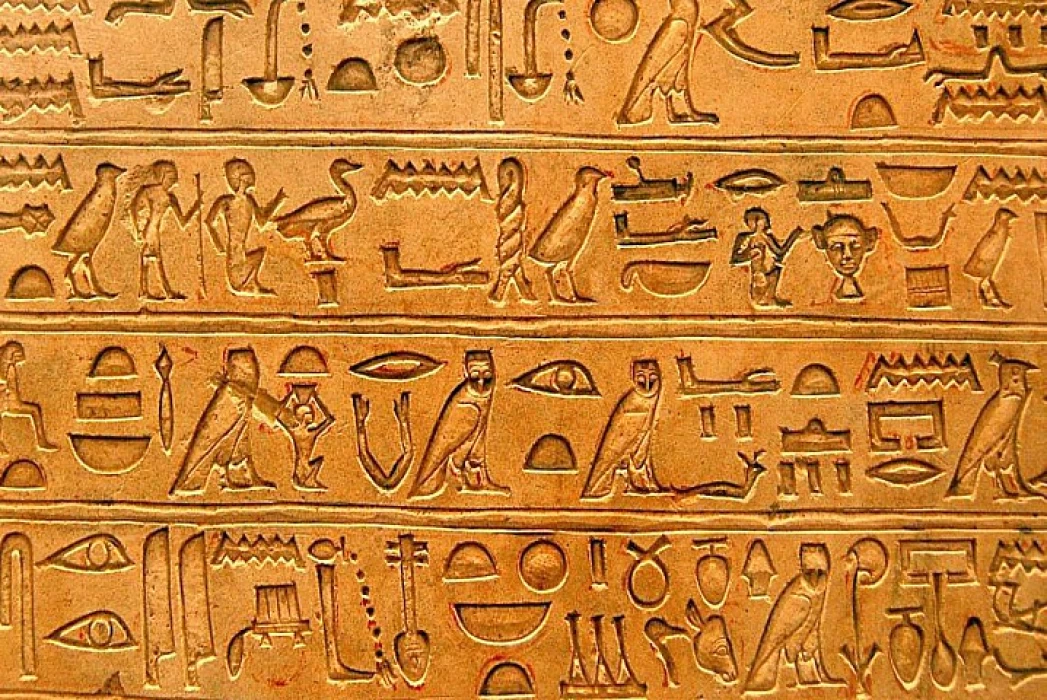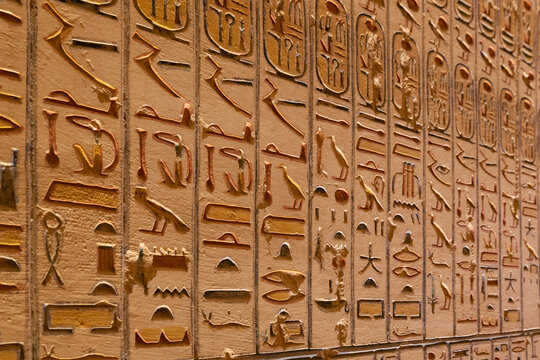On the west bank of Luxor, nestled within the shadows of the Valley of the Kings, stands the mortuary temple of Ramses III at Medinet Habu. Constructed between 1186 and 1156 BC, this monument not only commemorates the life and reign of one of Egypt’s most formidable pharaohs, but also houses an extraordinary collection of hieroglyphic inscriptions. These intricate carvings, which adorn the temple’s walls, are more than just decorative elements—they are powerful narratives, chronicling the pharaoh’s divine authority, military victories, and the cultural vibrancy of ancient Egypt.
A Chronicle of Triumph and Divinity
The hieroglyphic inscriptions at Medinet Habu are key to understanding the reign of Ramses III. One of the most significant stories depicted is his battle against the Sea Peoples, a coalition of foreign invaders who threatened Egypt’s borders during the 12th century BC. The reliefs and texts on the temple’s walls recount Ramses III’s heroic defense of Egypt, painting him as a divine protector chosen by the gods to restore and maintain order (Ma’at) against the forces of chaos.

The inscriptions celebrate the pharaoh’s military prowess, not only as a leader in battle but also as a ruler favored by the gods. Scenes of victorious battles, where Ramses III slays his enemies, are interspersed with depictions of ceremonial offerings to the gods, highlighting the close relationship between Egypt’s military success and religious devotion. These scenes are not just historical records; they emphasize the divine mandate that Ramses III believed legitimized his rule, reinforcing the idea that the pharaoh was both a mortal ruler and a living god.
Architectural and Artistic Splendor
The grandeur of Medinet Habu extends beyond the historical texts inscribed upon its walls. The temple itself is a stunning example of New Kingdom architecture, a vast complex that includes massive pylons, expansive courtyards, and intricately decorated sanctuaries. Every surface is covered with reliefs and hieroglyphs that convey the pharaoh’s triumphs, religious duties, and the stories of Egypt’s gods.

The hieroglyphs themselves are masterful works of art. Carved with precision, they display the skill of ancient Egyptian craftsmen. Each glyph, whether depicting Ramses III, the gods, or sacred symbols, serves to enhance the temple’s narrative. Many of the colors used to paint these hieroglyphs are still visible today, offering a glimpse of the temple’s original vibrancy. These colorful, detailed inscriptions not only capture historical events but also convey the spiritual essence of ancient Egypt, showcasing how art and politics were intricately intertwined in this civilization.
Cultural and Religious Significance
Medinet Habu’s function was not limited to being a historical record of Ramses III’s reign. It was also a place of worship dedicated to the Theban Triad—Amun, Mut, and Khonsu. As a mortuary temple, it was designed to honor the pharaoh’s ka (spirit) and ensure his continued protection in the afterlife. Within this sacred space, the hieroglyphs elevated Ramses III to the status of a divine being, reinforcing the belief that the pharaoh was the earthly representative of the gods.

These inscriptions also functioned as political propaganda. They served to legitimize Ramses III’s reign, particularly in the wake of his successful military campaigns and his defense of Egypt against external threats. The seamless integration of religious reverence and political authority within the temple’s inscriptions highlights the deep connection between governance and religion in ancient Egyptian society. The temple itself became a tool to project power, demonstrate divine favor, and ensure the pharaoh’s lasting legacy.
The Enduring Legacy of Medinet Habu
Today, the hieroglyphic inscriptions at Medinet Habu continue to provide invaluable insights into Egypt’s political, military, and religious history. As one of the best-preserved monuments of ancient Egypt, the temple remains a powerful testament to Ramses III’s legacy. The carvings immortalize his achievements, offering a vivid window into the life of a ruler who not only shaped Egypt’s history but also left an indelible mark on the culture and religion of the time.
The hieroglyphs at Medinet Habu are not merely ancient texts—they are a bridge between the past and the present, a tangible link to the grandeur and complexity of one of the world’s greatest ancient civilizations. The temple’s inscriptions continue to captivate modern visitors, providing a glimpse into the artistry, spirituality, and political sophistication of ancient Egypt that flourished over 3,000 years ago.

